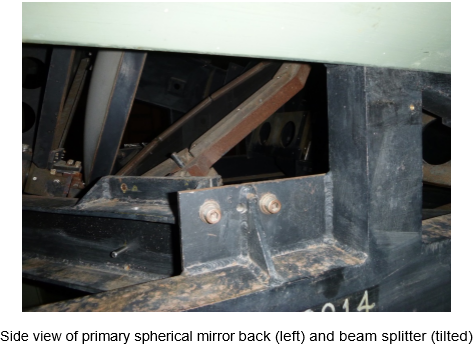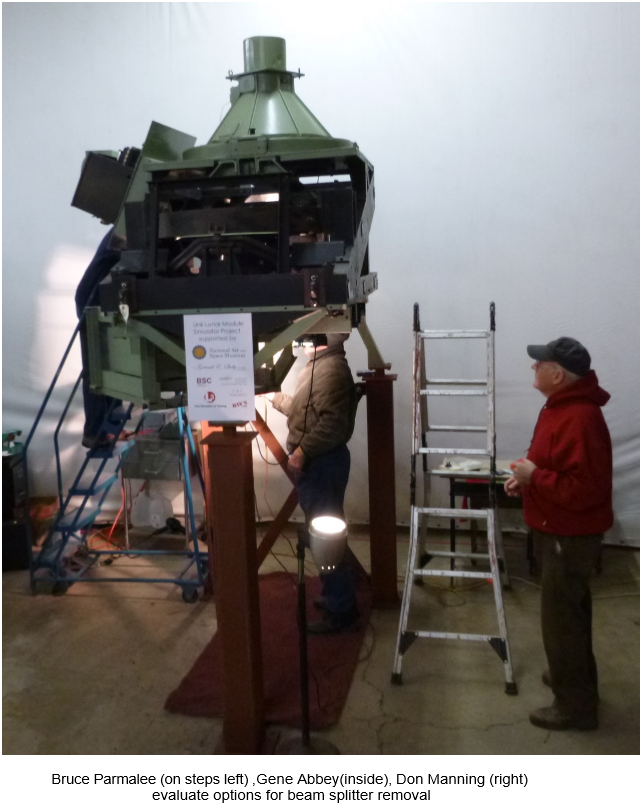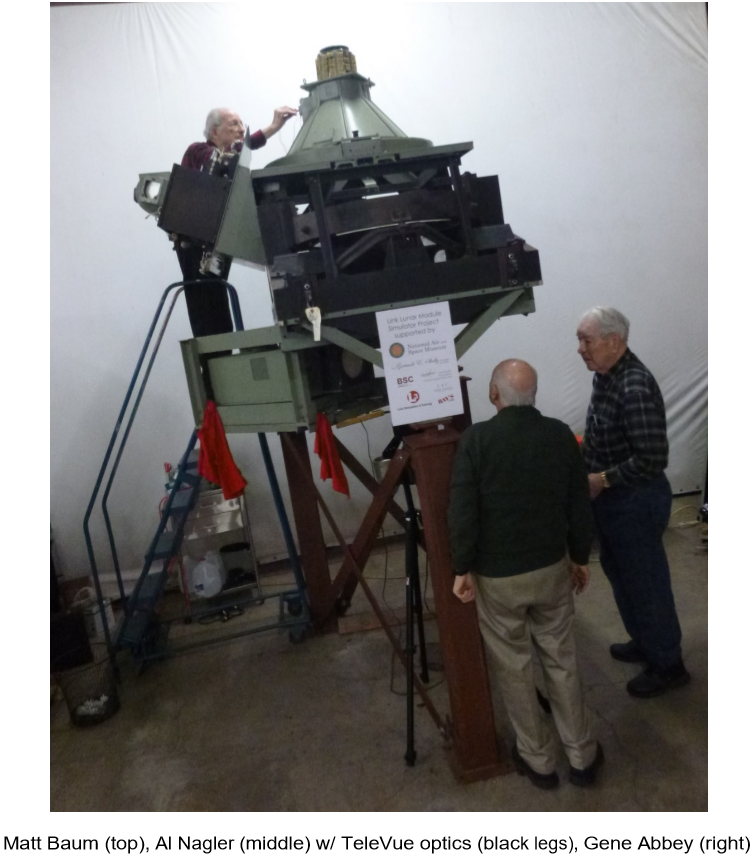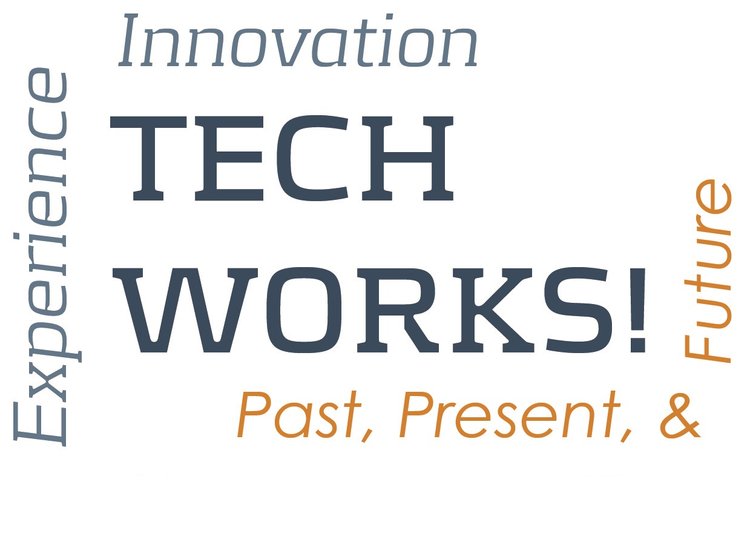March 13, 2017
NASM Loan #2360 - Lunar Module Simulator -
Telescope Display Restoration Project
Status report 30 January 2017
The TechWorks! LMS restoration team was joined by Matt Baum and Al Nagler, Farrand
Optical veterans, 25-26 Jan 2017. Note that comments related to dynamic display of the Overhead Window large starball are likely to translate directly to the Apollo Mission
Simulator starball(s) in storage at the Garber Facility, should a dynamic display be desired for the Destination Moon gallery.
1. Matt Baum succeeded in activating the vintage motors to produce motion in both axes for both the LMS Telescope Display starball and the Overhead Window large starball (in a freestanding cabinet). The tachometer outputs for the both motors on the large starball have been located; similar measurements on the small telescope starball should yield tachometer outputs soon. For dynamic display purposes in the future, a device to control speed of motion of the starballs can be implemented that would use these outputs in conjunction with a motor driver and difference amplifier.
Al Nagler tested two telescopes as candidates for visitor viewiing interfaces - one for viewing starfields generated by the LMS telescope display system of mirrors and beam splitters, and one for direct viewing of the large starball in motion. TeleVue costs estimates are $2,800 and $1,900, respectively.
With the combination of a LMS telescope starball capable of motion, a TeleVue "viewfinder", gently cleaned optics, and a darkened room, the TechWorks! - Farrand team was able to determine that the green laser points identified in our previous report as stars, post gentle cleaning in mid-January, are more likely to be spots on the optical components rather than reflections of stars.
The next step is to clean the optical components more thoroughly, beginning with unbolting the primary beam splitter from the structure for immersive cleaning. Temporary removal of the beam splitter also opens better access to the vertically oriented, primary spherical mirror for more thorough cleaning. On 30 January, TechWorks! invited vintage car restorers and a mechanical engineer to assist with disassembly of metal parts that have been "mated" for 50 years. Safe removal of the beam splitter in its steel frame is expected to be completed by 3 February.
We are considering a movable tent-like cover of black-out fabric to make optical path testing more effective and efficient. The metal side panels that hinder stray light from creating optical artifacts have been detached during restoration to allow access. The equivalent of stage drapery hung with magnets on the steel structure would allow darkened viewing of starfields during testing mode.
The search for documentation of the original illumination system continues. Any suggestions on where to find 1960s vintage Osram catalogs or bulb specifications will be appreciated. The question is how to power the surviving bulbs. Modern replacement bulbs from successor company Sylvana are larger (5" vs 4" original); these would require insertion of a custom fixture, a less than desirable solution.








